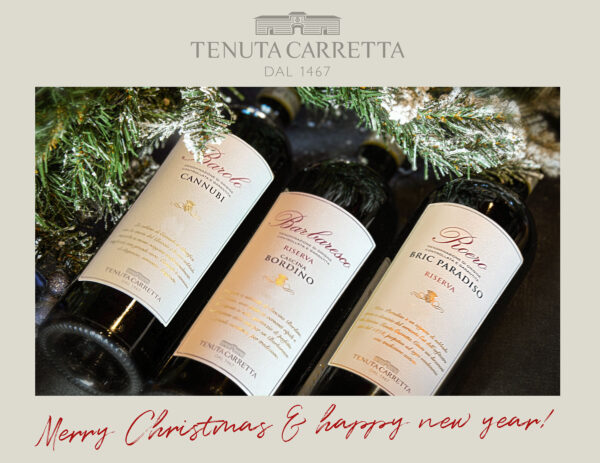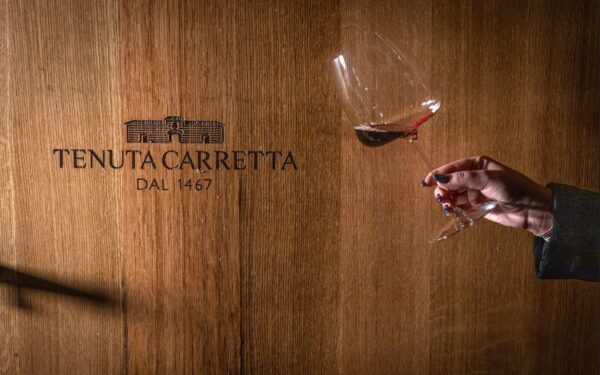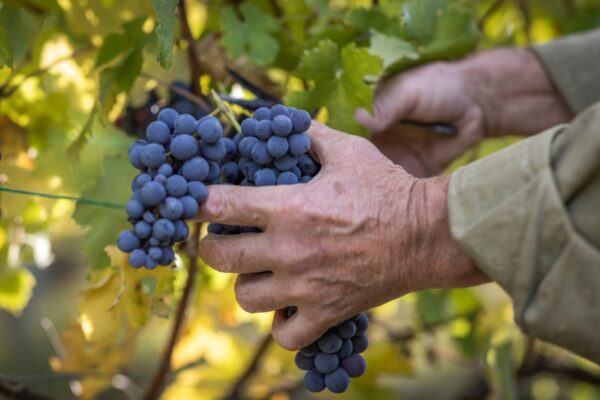• Winery, Hospitality, Wines
The Estate’s Single Vineyard Wines
Reading time in
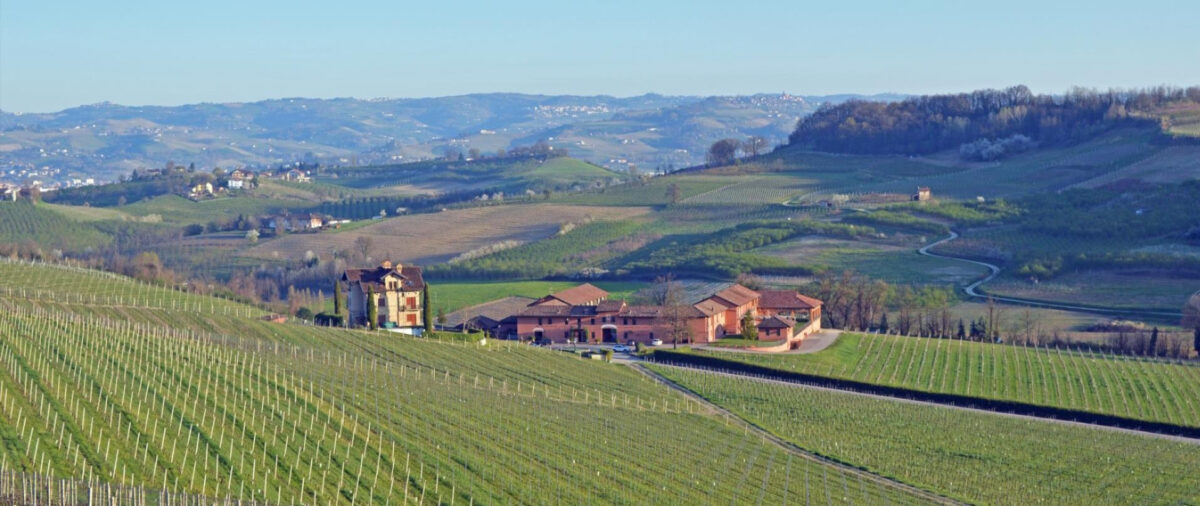
Tenuta Carretta introduces the latest vintages that will launch as “Superiore” wines: Bric Quercia Barbera d’Alba Superiore Doc 2018, Tavoleto Nebbiolo d’Alba Superiore Doc 2020 and Il Palazzo Dolcetto d’Alba Superiore Doc 2021
Tenuta Carretta’s estate single vineyard wines, which come from vineyards with singular significance and exceptional characteristics, do not only include top level denominations that are certified Denominazione di Origine Controllata e Garantita. According to tradition, the separate vinification of single plots also became a consolidated practice among denominations that may be lesser known but endowed with equally outstanding quality.
Tenuta Carretta emphasizes the importance of a single vineyard by uniting the name of the vineyard with other denominations, thus completing the picture of the great classic wines of Alba: Nebbiolo d’Alba, Barbera d’Alba and Dolcetto d’Alba.
«Dedicating utmost attention and employing the same production philosophy observed with the important denominations also to other classic ones of the territory, such as Dolcetto d’Alba, Barbera d’Alba or Nebbiolo d’Alba, are of paramount importance to us – says Giovanni Minetti, CEO of Tenuta Carretta – Tenuta Carretta decided to come full circle with the identification as well as the ennobling of these wines. Firstly, the name of the vineyard identifies plots with such quality and consistency that these allow them to be vinified separately, thus elevating the vineyard as a paradigm of identity. Secondly, we deeply believe in the potential of that very identity which, if respected and aptly expressed in the bottle (and this conformity also goes the other way), can become an element of distinctive uniqueness, or a highly ennobling feature».
There are three wines that have represented the territory of Langhe and Roero for centuries. They have been able to maintain their peculiar characteristics and organoleptic properties intact, remaining true to their nature and not swayed by the changes in fashions and tastes.
Over time, Tenuta Carretta has selected three sites – each one distinct for a specific grape variety – with different and excellent pedoclimatic conditions. The Nebbiolo vineyard that produces the grapes for Nebbiolo d’Alba is found in Podere Tavoleto, situated within the municipality of Alba, along the border with Barbaresco, and planted on marly soils (Sant’Agata Fossili Marl). Dolcetto d’Alba is produced on the hill of Madonna Como, also in the municipality of Alba but on the south-eastern section, on soils consisting of Diano Sandstones, which are ideal for this variety.
The grapes for Barbera d’Alba come from Bric Quercia, located near the winery, on Roero’s typical sands of marine origin, in Piobesi d’Alba.
Three areas, three grapes, three vineyards and three wines characterized by their exclusive nature, which allows to vinify unique fruits that are the result of a particular harvest, every year. These wines are sensitive to the elements of nature, which influence their character and also allow to capture the distinct nuances of every vintage, all while remaining true to themselves.
Starting this year, these three wines will be launching their latest vintages as Superiore types. «We firmly believe that the right time to release wines is when they are at their peak and are therefore ready for drinking – Minetti adds – This leads us to not compromise on letting the wines go through their evolution, launching them a few months later than the usual release date and being steadfast in allowing the wines to age for a few months more. This is how we have always made our wines and we believe that it is all a matter of keeping the right pace, releasing the products according to their own time».
Estate’s Single Vineyard Superiore wines
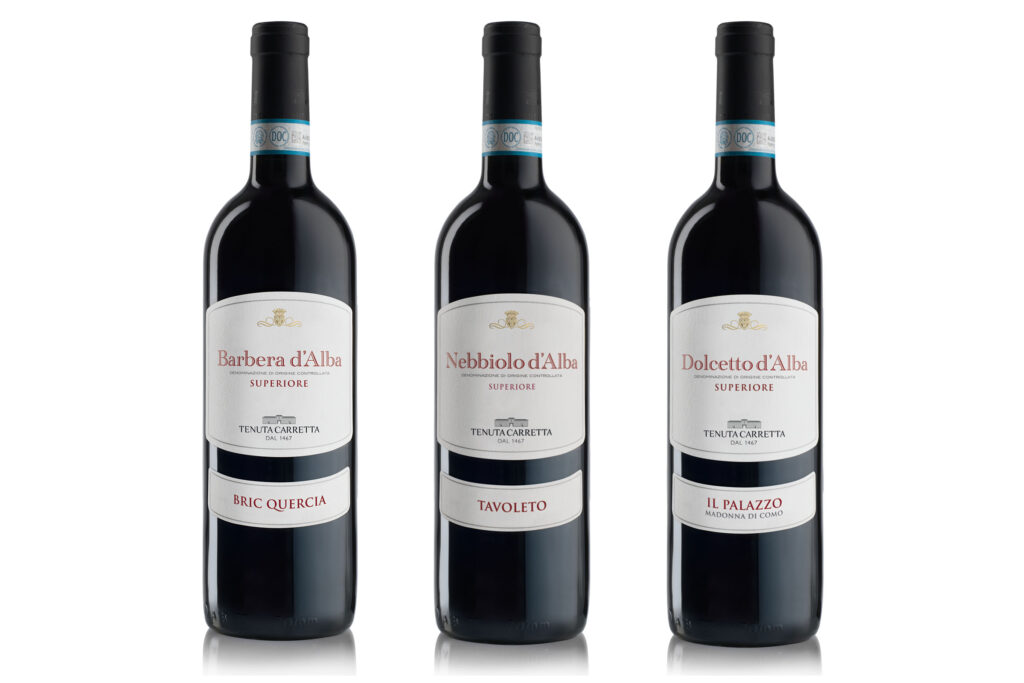
BRIC QUERCIA BARBERA D’ALBA SUPERIORE DOC
Bric Quercia is situated on the hill that forms the natural amphitheater surrounding the winery. Here, the Barbera grapes yield highly elegant and delicate wines. The Superiore type requires a minimum aging period of 12 months (of which at least 4 in wood) starting from the 1st of November of the year of harvest. Fermentation, with submerged-cap maceration, lasts for 10-12 days at 28°C. The wine is then aged in oak barrels for a minimum of 12 months. Bottling and another period of aging follow; the former lasts for at least 24 months, which is twice the minimum period stated in the production disciplinary. Intense ruby red, rich and complex aromas with hints of vanilla and black cherry. The mouth is full and fresh, savory and harmonious, notably persistent.
TAVOLETO NEBBIOLO D’ALBA SUPERIORE DOC
This rich and long-lived Nebbiolo d’Alba Superiore endowed with excellent structure comes from property vineyards cultivated in the sunny and steep land of Podere Tavoleto, in the hamlet of San Rocco Seno d’Elvio, situated in the municipality of Alba. The “Superiore” classification requires a minimum aging period of 18 months (of which at least 6 in wood) starting from the 1st of November of the year of harvest. This establishes product launch on the 1st of May of the second year following grape harvest. Fermentation and maceration last for 10-12 days at a temperature of 28°C. After, the wine is placed in oak tonneaus to age for at least 12 months. The wine is then bottled and aged for another 6 months. Ruby red with garnet reflections, rich and complex aromas with hints of incense, licorice, vanilla and ripe fruit. Harmonious and velvety in the mouth, extremely elegant with pleasantly delicate tannins.
IL PALAZZO DOLCETTO D’ALBA SUPERIORE DOC
The grapes come from property vineyards grown on soils rich in limestone sands (Diano Sandstone) in Madonna di Como, a suitable area for the Dolcetto grape, located in the municipality of Alba, on the sunny side overlooking the hamlet of Ricca di Diano d’Alba. An ancient bishop’s palace once stood here, hence the wine’s name. In order to be classified as “Superiore”, the wine must be aged for 12 months starting from the 1st of November of the year of harvest. The wine’s release is thus set from the 1st of November of the year following grape harvest. Fermentation and maceration are carried out for 10-12 days at 28°C. After, the wine is transferred to stainless steel tanks to age for at least 6 months. The wine is then placed in the bottle where it will age for at least another 6 months, until it reaches the 12 months indicated by the disciplinary. Ruby red with violet reflections, rich and intense aroma with hints of flowers and fruits. Harmonious and velvety mouthfeel, unveiling extreme elegance as well as pleasantly sweet and delicate tannins.
